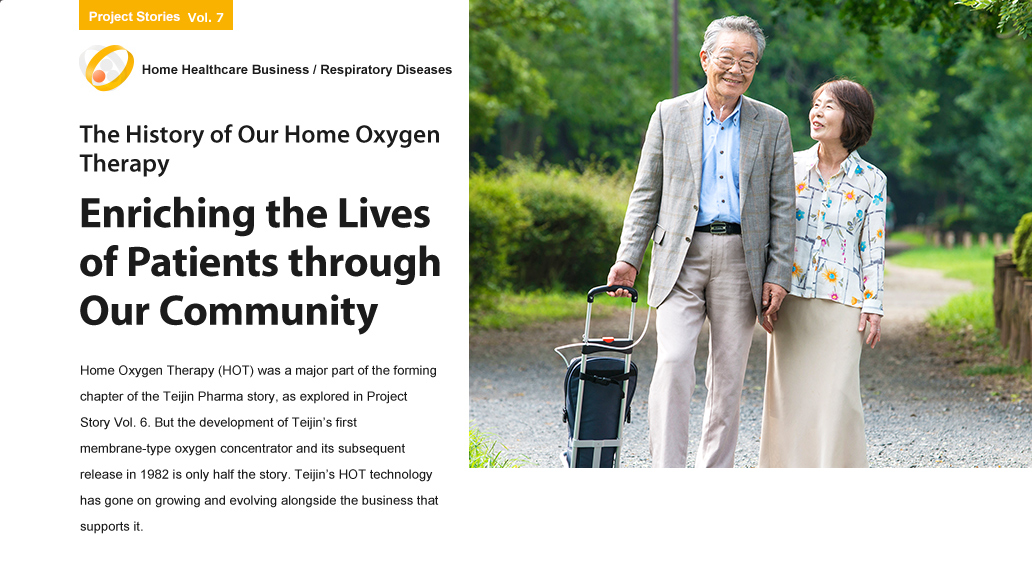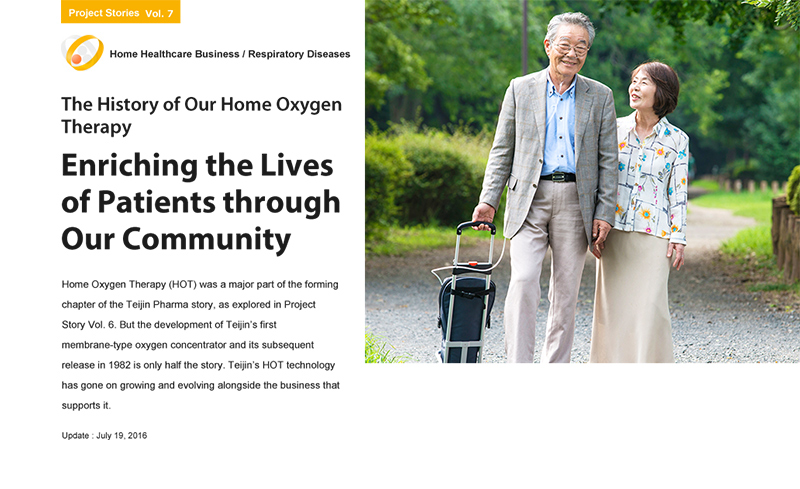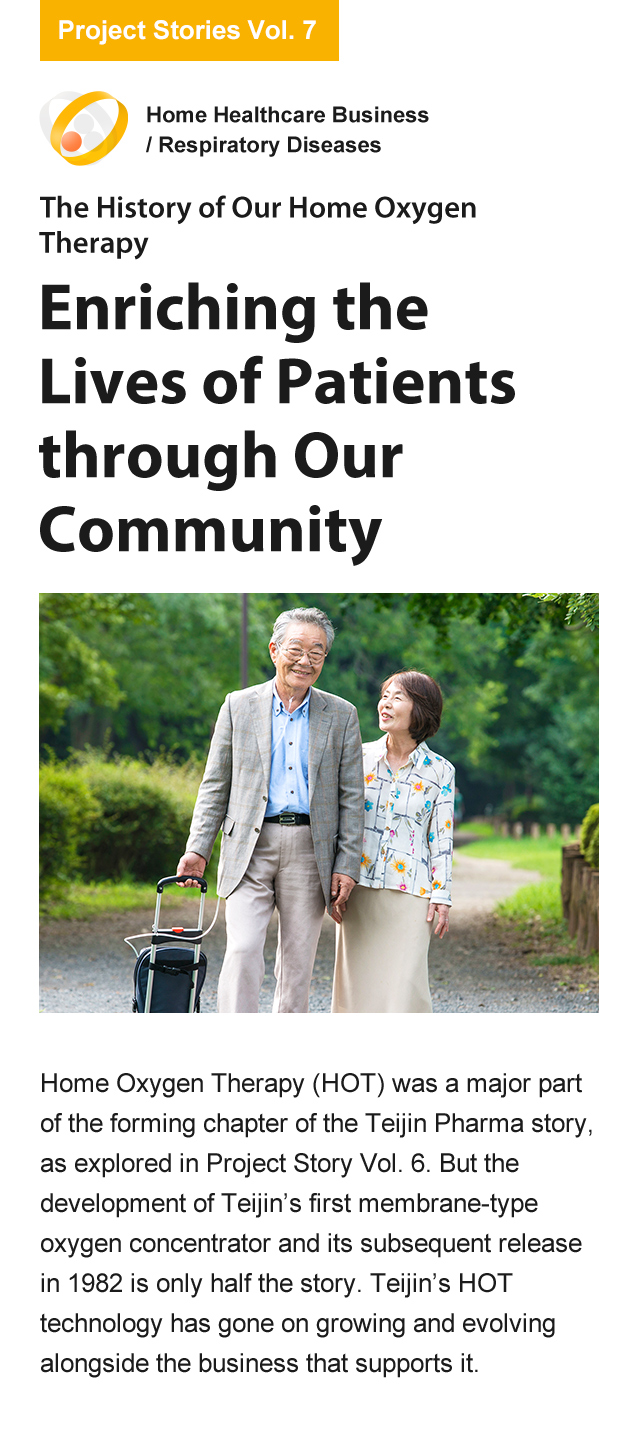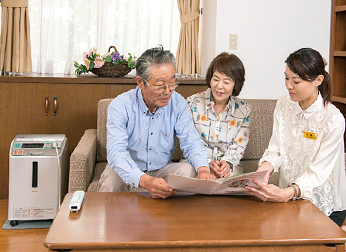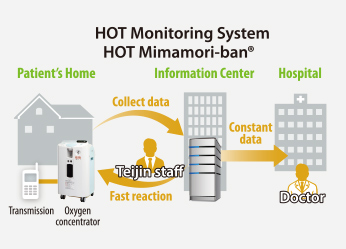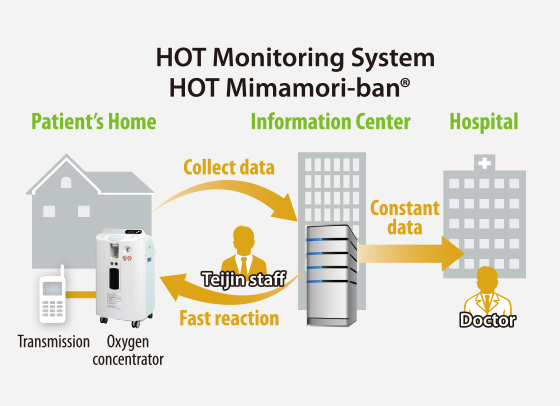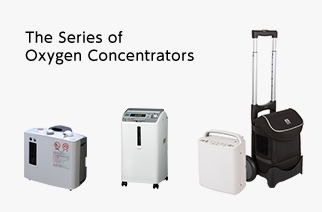When the TO-40 Mild Sanso, the first membrane-type therapeutic oxygen concentrator to be manufactured in Japan, was made available to the public, it cost around the same amount as a new car. As patients of respiratory diseases often go in and out of hospital care, many could not justify the huge cost of the device when they may not need it for a long stretch of time. As a result, HOT devices only sold several hundred units when they were first available for purchase, even though many patients recognized the benefits of having these devices for home use. The Association of Respiratory Disease Patients, an organization formed in 1982, soon began lobbying across the country for the Ministry of Health and Welfare to approve oxygen concentrators for provision under Japan’s national health insurance.
By 1983, the issue had come to media prominence, featuring in national news broadcasts. Doctors added their support to the voice of lobbyists, expressing how important this form of treatment was for patients. Just two-and-a-half years after its introduction to the Japanese market, therapeutic oxygen concentrators successfully gained coverage under national health insurance, giving patients across the country access to treatment that would otherwise have been too costly.
With the growing number of recipients of HOT across Japan, Teijin began building the network needed to make home treatment as safe and effective as possible. Aiming to provide an equal level of service to patients regardless of their location, they began by scouting the best people available from around the Teijin Group to form a network providing HOT patients with regular maintenance and customer services, even in the most remote locations. And if a patient needs to travel, or moves to a new location, the network communicates with local doctors and ensures patients will be provided with the correct type of HOT device no matter where they are.
Dr. Thomas L. Petty, a longtime ally of Teijin Pharma’s work on oxygen therapy (see vol. 6), advised that it was important to be innovative, not just on the technology side of development, but across the whole service of support for patients. In 1988, alongside nurse colleague, Louise M. Nett, Dr. Petty conducted seminars on HOT throughout the country and helped to promote the importance of the teams of people behind HOT services. Nurse Nett also stressed the importance of education for nurses and toured Japan doing seminars herself. Teijin Pharma service locations are staffed by nurses who conduct home visits and care for HOT patients; home care staff responsible for installing and inspecting HOT devices; sales members in close contact with hospitals and doctors, as well as members in charge of the communication network and lab technicians located separately. The network which has grown together with the development of HOT devices has continued to improve patients’ quality of life, one of Teijin’s core philosophies.
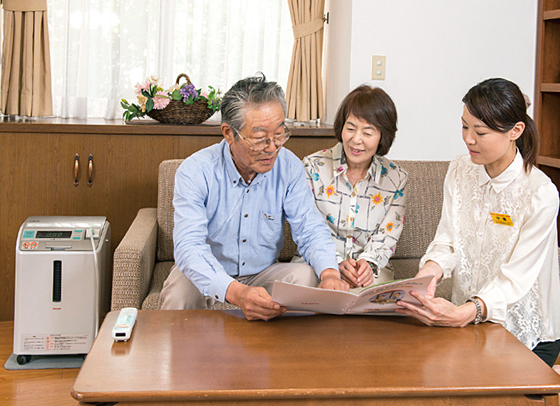

In 1991, Teijin took their network to a new level, introducing a 24-hour monitoring system for HOT devices through telephone landlines. This system began the supply of constant data on oxygen density and machine function, allowing Teijin members to react to any malfunction and collect data which allows doctors to accurately advise on the treatment of individuals. By 2010, the system had advanced to include a mobile network, making it possible to reach remote locations such as islands and mountainous regions where landlines are unreliable. As many users of HOT devices are elderly and often live alone, this network also fulfills an essential role as a monitoring system. If any issue is reported, Teijin members are able to quickly contact the patient and advise them on what to do.
The monitoring system is also equipped for emergency situations such as earthquakes, as an oxygen concentrator cannot function during an electrical blackout. The Disaster Mapping Assistant Partner (D-MAP) automatically identifies patients inside a disaster area, such as any earthquake above seismic 5 intensity, and sends notifications to Teijin Pharma members to alert them. In the recent Kumamoto Earthquakes, the work of checking patients was started within minutes of each of the two tremors and successfully completed within around 24-hours of both. All of these developments have added value to the original product over time, enriching the lives of patients of respiratory diseases.
Much has changed since the first oxygen concentrator was installed in a patient’s home in 1982, both Teijin Pharma’s services and the oxygen concentrators themselves have evolved. The most significant changes to Teijin’s oxygen concentrators began with research in 1999. Basing development not only on the work of R&D, but also on the wants and needs of patients and doctors, a new generation of devices was born. Sales staff responsible for caring directly for HOT patients expressed the qualities they wanted to see in the new model. In answer to this, the Hi-Sanso featured a newly compacted sound-reduction system, reducing its size. It also featured the ability to remove and reuse the water present in air naturally, erasing the need for patients to clean and refill a water bottle to prevent the produced oxygen from becoming dry.
In the present day, Teijin Pharma makes oxygen concentrators small enough for portable use on trains and models which are as quiet as the average library, allowing patients more freedom than ever as they can safely travel with their devices and use them anywhere. From Teijin scientists’ initial discovery of membrane-type oxygen concentration before Teijin Pharma had even been formed, through to the comprehensive network of support that is offered for patients using oxygen concentrators today, the story of HOT is one of cutting edge evolution.
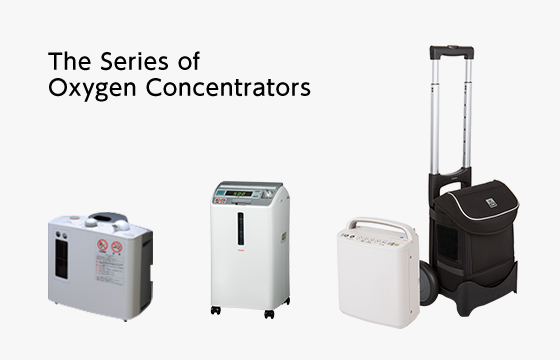
Related Links
- Project Stories Vol. 6 Building a new culture of healthcare through innovation
- Project Stories Vol. 5 Creating Products to Match Medical Needs
- Project Stories Vol. 4 Improving Quality of Life for SAS Patients
- Project Stories Vol. 3 Building a Strong Platform in the Field of Bone and Joint Diseases
- Project Stories Vol. 2 Providing Home Healthcare Support in a Disaster
- Project Stories Vol. 1 A New Drug Born from R&D




